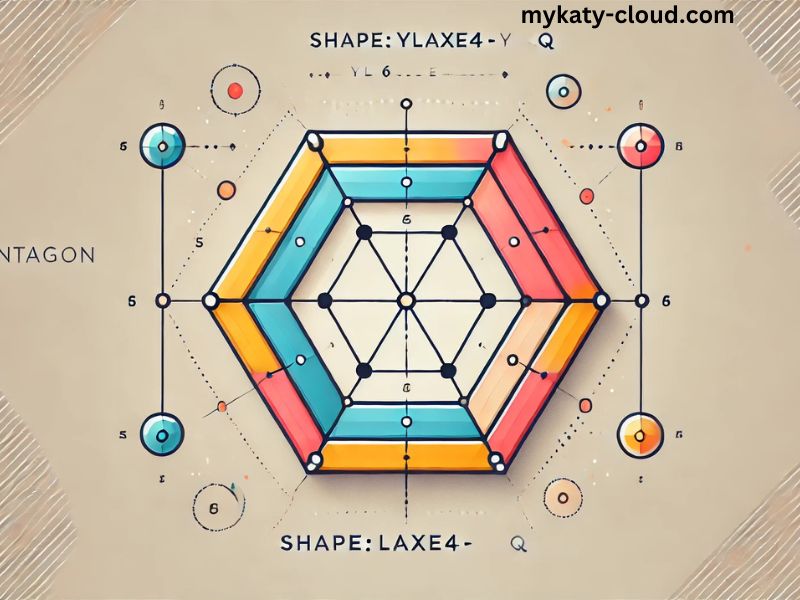The pentagon is a fascinating geometric shape characterized by its five straight sides and five angles. This shape is not only a fundamental concept in geometry but also holds significant importance in various fields, including architecture, design, and even symbolism in cultures around the world. The name “pentagon” comes from the Greek word “pentagonon,” meaning “five angles.”
Basic Properties of the Pentagon
A regular pentagon has equal sides and angles, each measuring 108 degrees. The total sum of the interior angles of any pentagon can be calculated using the formula (n−2)×180(n – 2) \times 180, where nn is the number of sides. For a pentagon:
(5−2)×180=540 degrees(5 – 2) \times 180 = 540 \text{ degrees}
This geometric property is crucial for understanding not only the pentagon itself but also its relationships with other shapes and forms.
Types of Pentagons
- Regular Pentagon: All sides and angles are equal. It exhibits symmetry and is often found in design and art.
- Irregular Pentagon: The sides and angles can vary in length and measure, making it a more versatile shape for various applications.
- Concave Pentagon: At least one interior angle is greater than 180 degrees, causing the shape to “cave in.”
- Convex Pentagon: All interior angles are less than 180 degrees, and no sides bend inward.
The Pentagon in Nature
Pentagons are not just confined to mathematical theory; they also appear in nature. For example, the starfish has a pentagonal symmetry, demonstrating how this geometric shape can arise in biological organisms. Similarly, the arrangement of certain flowers and fruits often reflects pentagonal patterns, showcasing the deep connection between mathematics and natural forms.
The Pentagon in Architecture
One of the most iconic examples of a pentagon in architecture is the Pentagon building in Arlington, Virginia, which serves as the headquarters of the United States Department of Defense. This structure was completed in 1943 and has become a symbol of military might and American resilience.
Design Features
- Shape and Structure: The Pentagon’s unique five-sided shape allows for efficient use of space. With a total area of approximately 6.5 million square feet, it is one of the largest office buildings in the world.
- Symbolism: The five-sided design represents the five branches of the U.S. military: the Army, Navy, Air Force, Marine Corps, and Coast Guard. This embodiment of unity and strength is reflected in the building’s architecture and its surrounding landscape.
- Functionality: The building’s layout was designed for optimal communication and collaboration, with each of its five sides connected by a central courtyard. This design enhances the flow of information, essential for a military organization.
The Pentagon in Art and Culture
Beyond its architectural significance, the pentagon appears frequently in art, culture, and symbolism. Its five points can represent various concepts, such as the five elements in various philosophies, including earth, water, fire, air, and spirit.
Symbolic Meanings
- Harmony and Balance: The pentagon’s symmetry is often associated with balance and harmony, making it a popular motif in spiritual and religious art.
- Mathematical Perfection: In many cultures, the pentagon symbolizes the pursuit of knowledge and the perfection of mathematical principles.
- Fifth Element: In some traditions, the pentagon represents the fifth element, often seen as a bridge between the physical and spiritual realms.
Mathematical Applications of the Pentagon
The pentagon plays a critical role in various mathematical fields, including geometry, topology, and tessellation.
Tessellation
While regular pentagons cannot tile a plane without leaving gaps, irregular pentagons can. This property makes them particularly interesting in the study of tessellation, a concept that has practical applications in art and architecture.
Geometry and Trigonometry
The pentagon serves as a foundational shape in the study of polygons, influencing calculations involving area, perimeter, and volume. For instance, the area of a regular pentagon can be calculated using the formula:
Area=145(5+25)s2\text{Area} = \frac{1}{4} \sqrt{5(5 + 2\sqrt{5})} s^2
where ss is the length of a side. This formula highlights the pentagon’s complexity and its relationship with other geometric shapes.
The Pentagon in Technology
In technology, pentagonal shapes are utilized in various designs, from everyday objects to advanced machinery. The principles derived from studying pentagons influence product design, user interface design, and even robotics.
Product Design
The pentagon’s unique shape can create ergonomic and aesthetically pleasing products. For example, many tools and gadgets incorporate pentagonal designs to improve grip and usability.
User Interface Design
The pentagon’s symmetry and structure can also be applied in digital design, creating interfaces that are intuitive and visually appealing. This is particularly relevant in game design, where pentagonal shapes may represent key features or functions.
Conclusion
The pentagon is a multifaceted shape that transcends simple geometric classification. Its properties resonate across various fields, from mathematics and architecture to art and technology. Understanding the pentagon enriches our appreciation of the world around us, revealing the connections between structure, function, and symbolism. As we continue to explore the applications and implications of this geometric figure, its importance in both natural and human-made systems becomes increasingly evident. Whether in the design of buildings or the patterns found in nature, the pentagon remains a shape of significance and intrigue.



